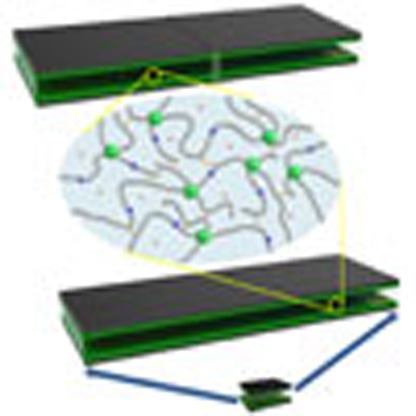- Record: found
- Abstract: found
- Article: found
A self-healable and highly stretchable supercapacitor based on a dual crosslinked polyelectrolyte

Read this article at
Abstract
Superior self-healability and stretchability are critical elements for the practical wide-scale adoption of personalized electronics such as portable and wearable energy storage devices. However, the low healing efficiency of self-healable supercapacitors and the small strain of stretchable supercapacitors are fundamentally limited by conventional polyvinyl alcohol-based acidic electrolytes, which are intrinsically neither self-healable nor highly stretchable. Here we report an electrolyte comprising polyacrylic acid dual crosslinked by hydrogen bonding and vinyl hybrid silica nanoparticles, which displays all superior functions and provides a solution to the intrinsic self-healability and high stretchability problems of a supercapacitor. Supercapacitors with this electrolyte are non-autonomic self-healable, retaining the capacitance completely even after 20 cycles of breaking/healing. These supercapacitors are stretched up to 600% strain with enhanced performance using a designed facile electrode fabrication procedure.
Abstract
 Materials for wearable energy storage devices should be mechanically durable. Here,
the authors report a supercapacitor composed of polyacrylic acid dual cross-linked
by hydrogen bonding and vinyl hybrid silica nanoparticles which is self-healable and
retains performance when stretched up to 600%.
Materials for wearable energy storage devices should be mechanically durable. Here,
the authors report a supercapacitor composed of polyacrylic acid dual cross-linked
by hydrogen bonding and vinyl hybrid silica nanoparticles which is self-healable and
retains performance when stretched up to 600%.
Related collections
Most cited references25
- Record: found
- Abstract: found
- Article: not found
A thermally re-mendable cross-linked polymeric material.
- Record: found
- Abstract: found
- Article: not found
Scalable synthesis of hierarchically structured carbon nanotube-graphene fibres for capacitive energy storage.
- Record: found
- Abstract: found
- Article: not found